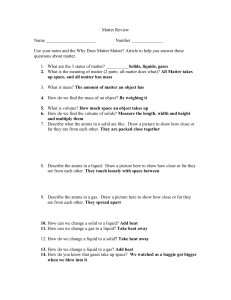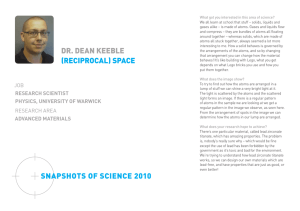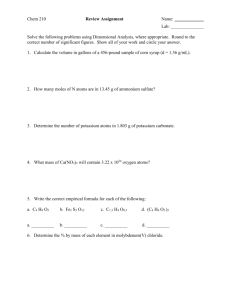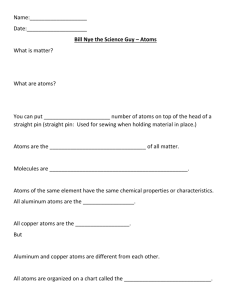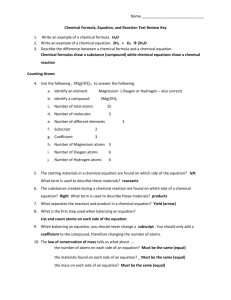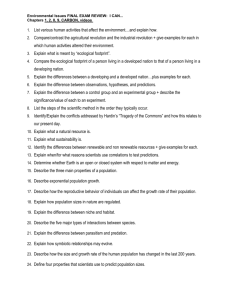Review of KMT
advertisement
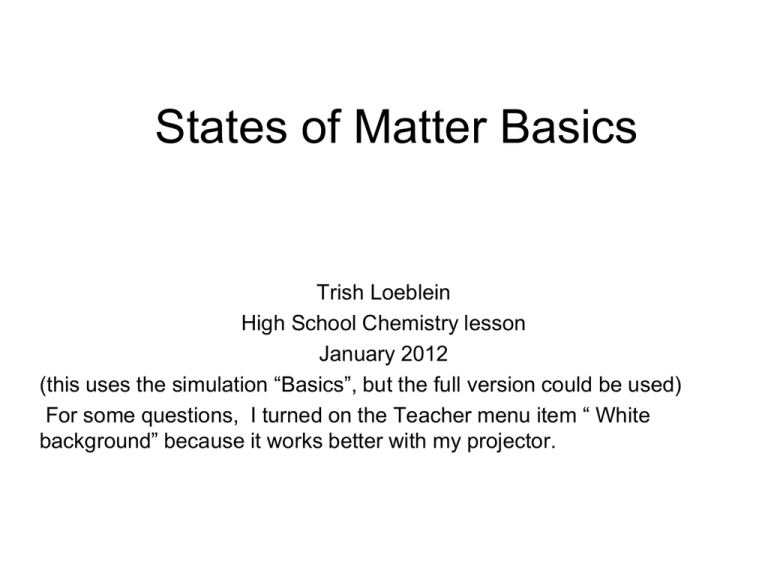
States of Matter Basics Trish Loeblein High School Chemistry lesson January 2012 (this uses the simulation “Basics”, but the full version could be used) For some questions, I turned on the Teacher menu item “ White background” because it works better with my projector. Learning Goals: Students will be able to: • Describe differences and similarities between solids, liquids and gases on a molecular level. • Explain gas pressure using the Kinetic Theory. • Determine processes you could use to make solids, liquids and gases change phases. • Compare and contrast the behavior of the 4 substances in the simulation and use your understanding about molecules to explain your observations. 1. Which is most likely oxygen gas? A B C 2. Which is most likely liquid water? A B C 3. How could there be 2 phases of oxygen at one temperature? Oxygen Liquid-Gas Like waterwater vapor in a water bottle 4. What happens if you add energy using the heater? A. No change other than all atoms speed up B. More atoms would condense C. More atoms would vaporize More are gaseous 5. What happens if you reduce the volume? A. No change other than the atoms would be closer together. B. More atoms would condense C. More atoms would evaporate 6. What happens if you reduce the volume a little? A. No change B. More atoms would condense C. More atoms would evaporate 7. Which liquid material is most likely shown on the left? A. Argon B. Neon C. Water D. Oxygen Temperature shown is the melting point.

